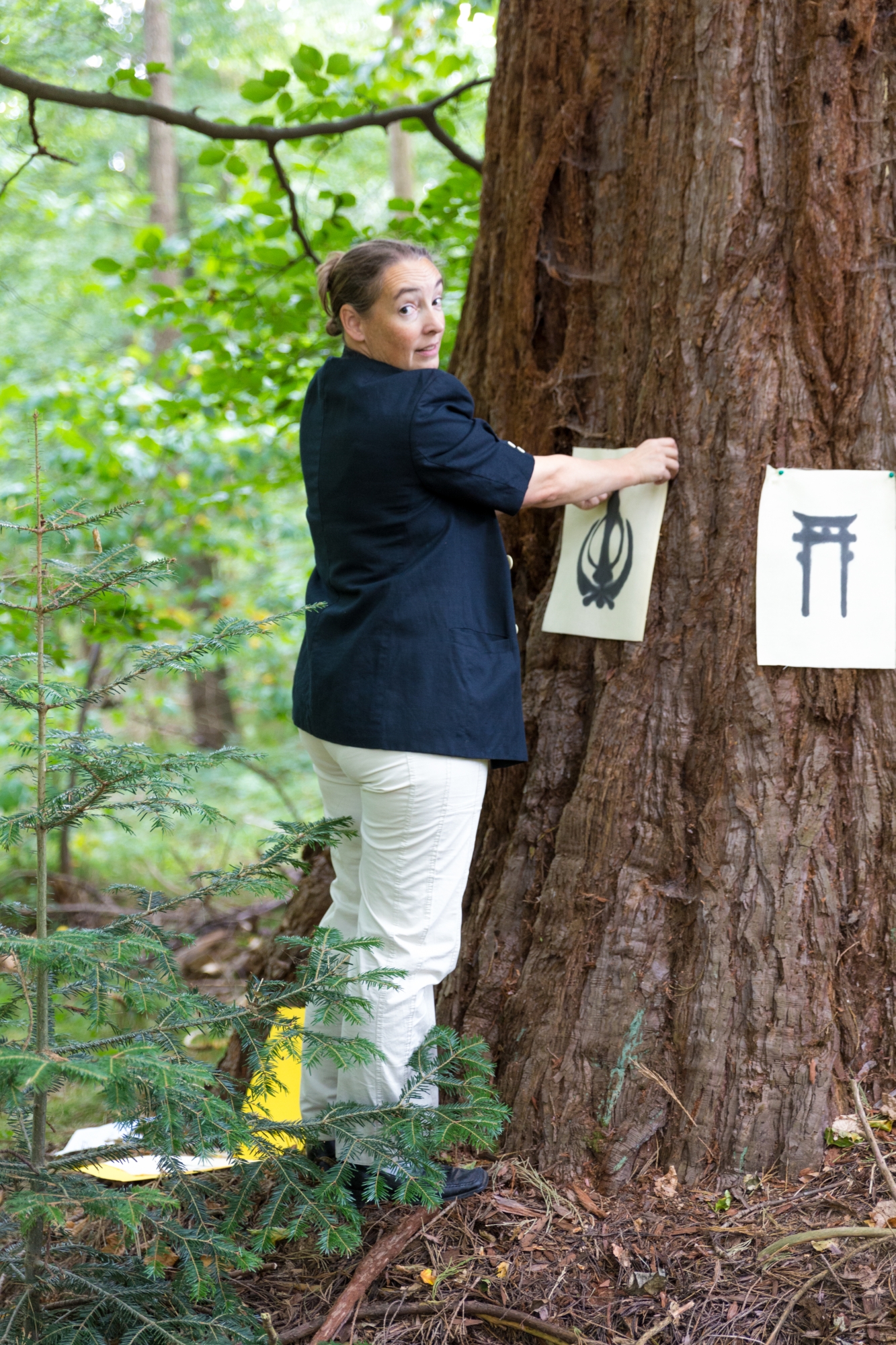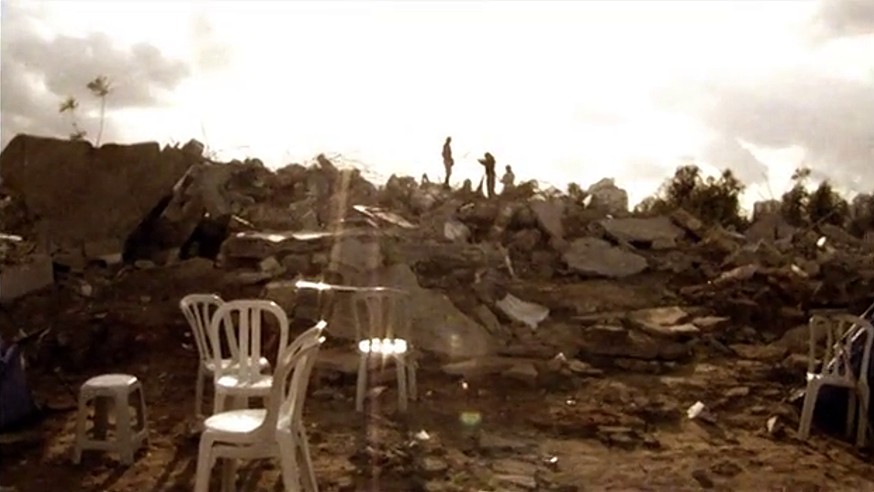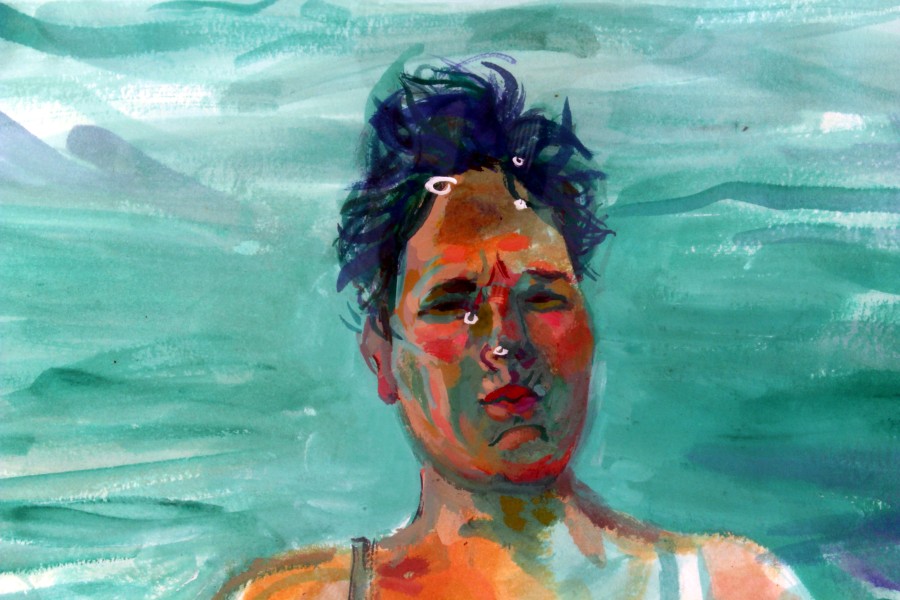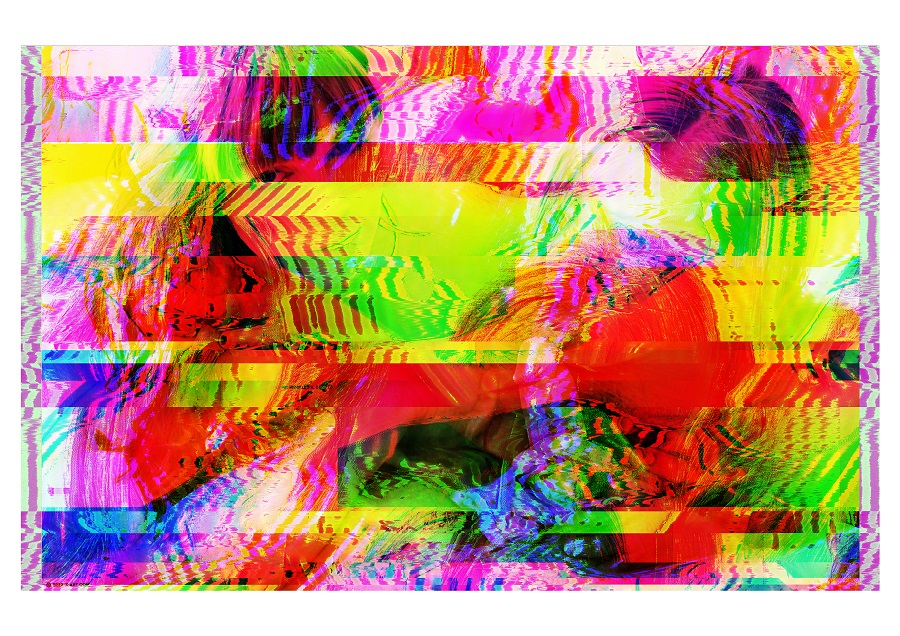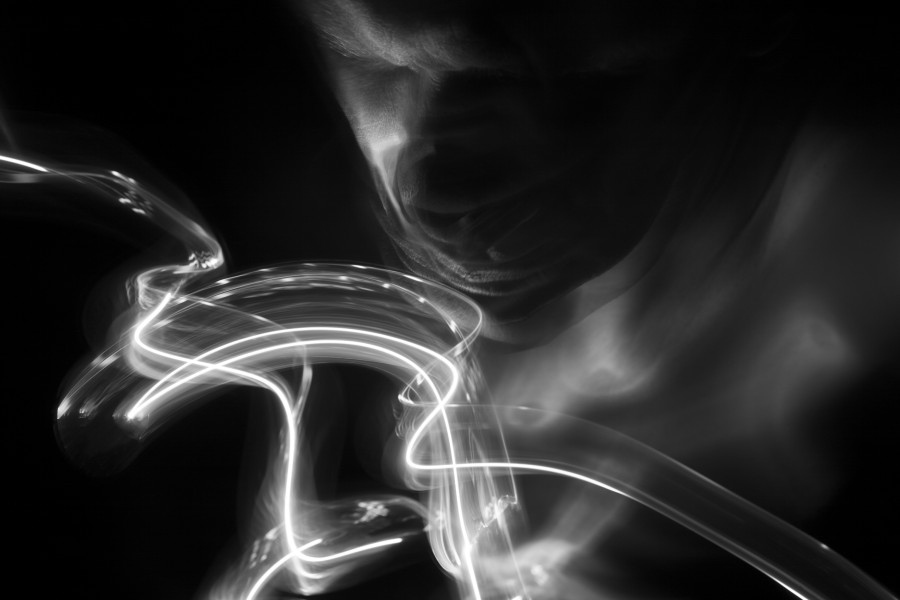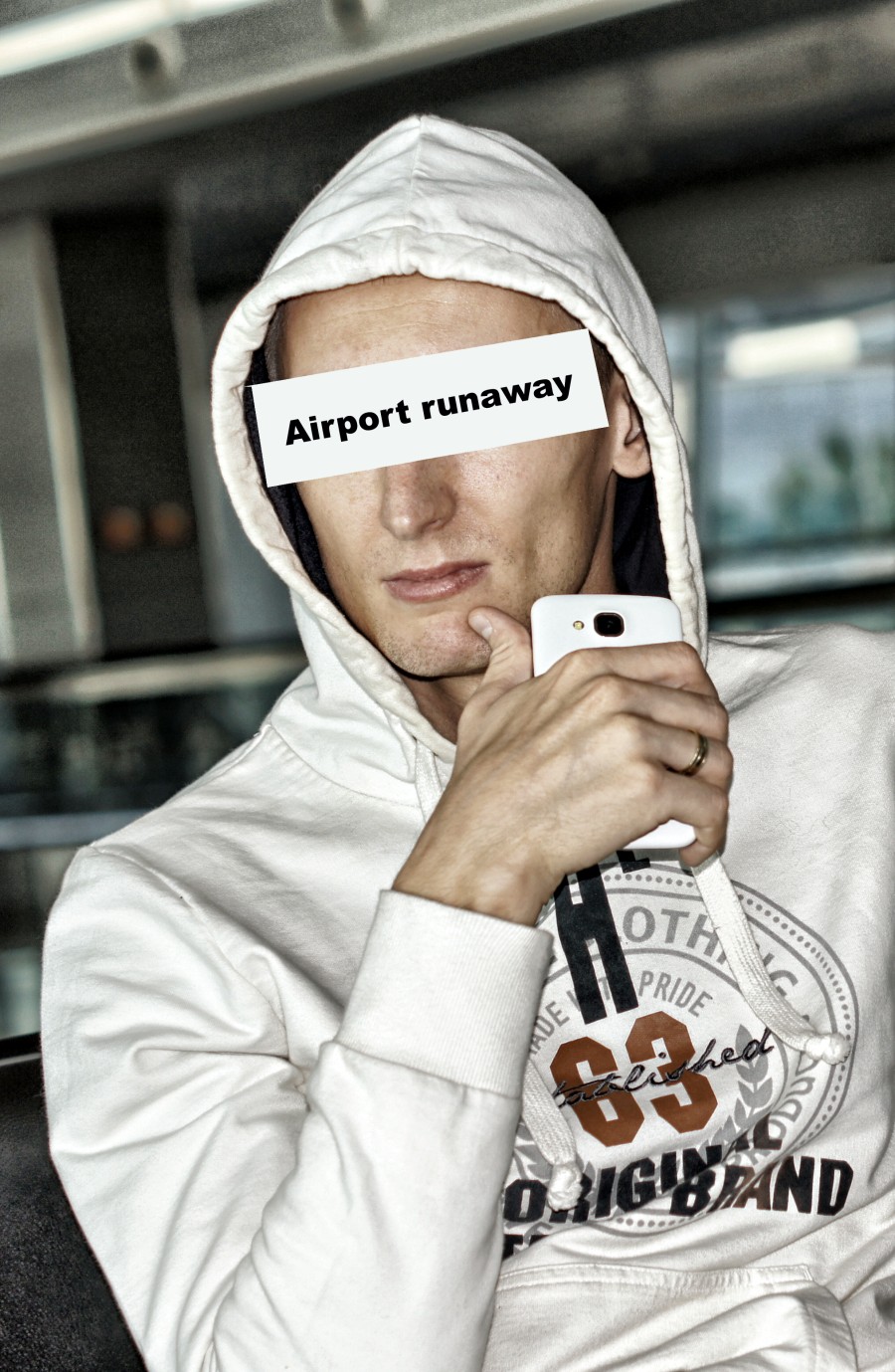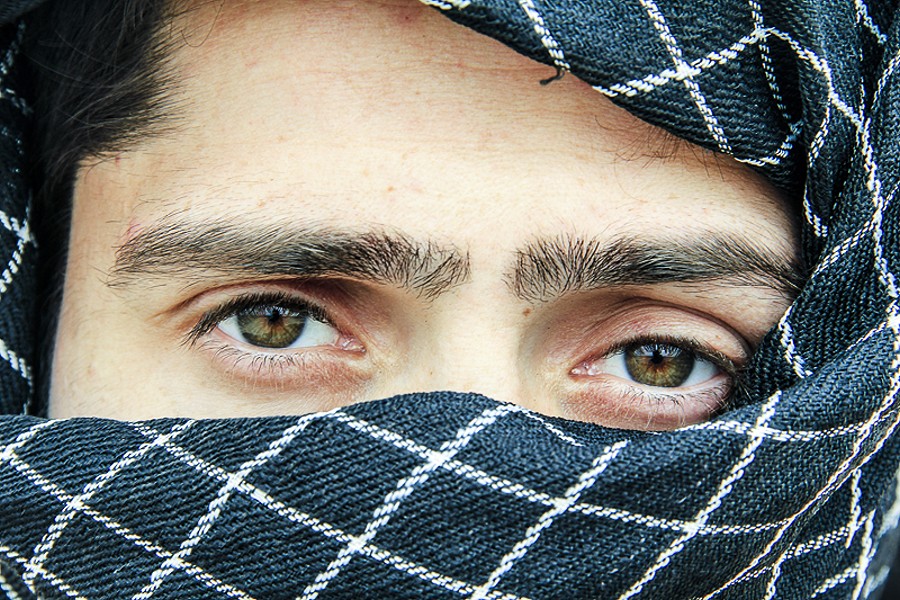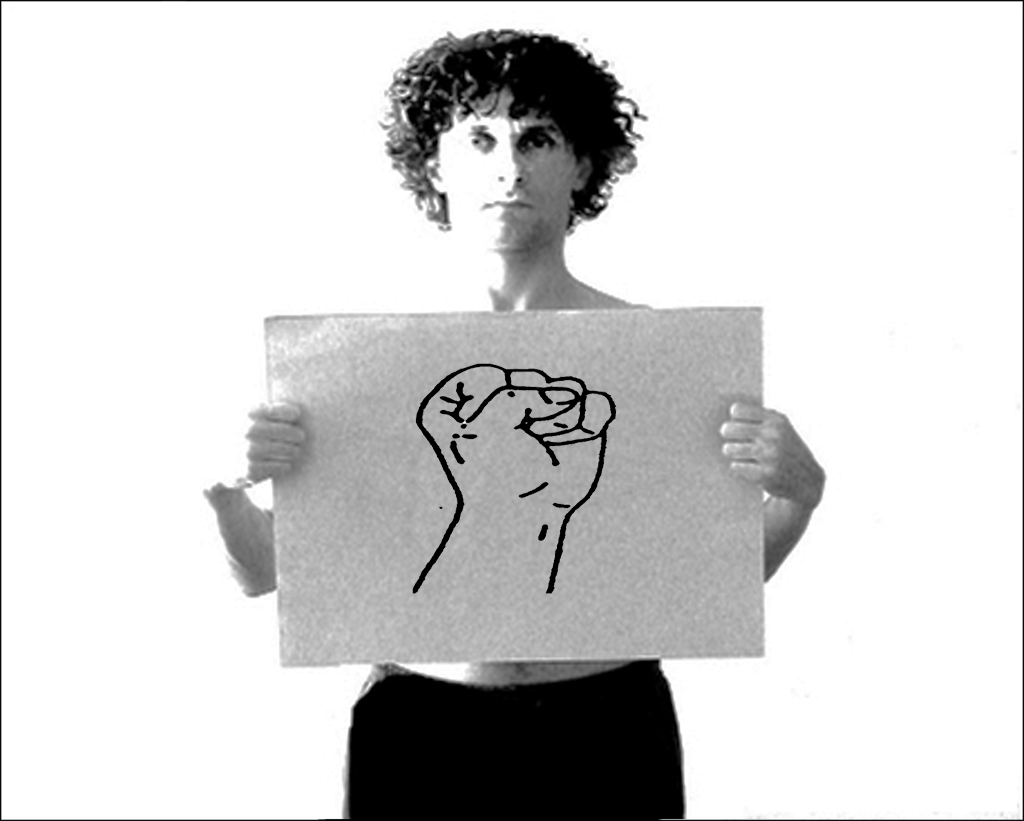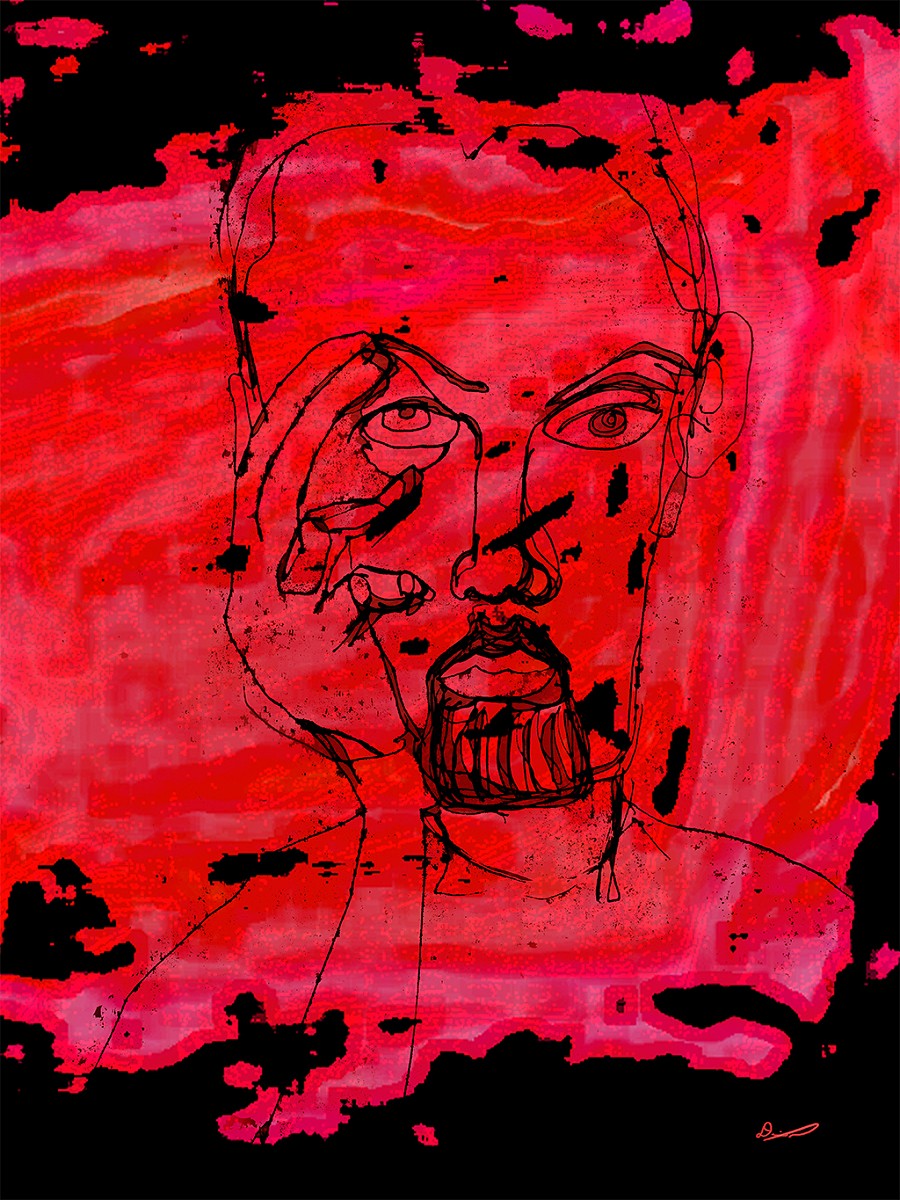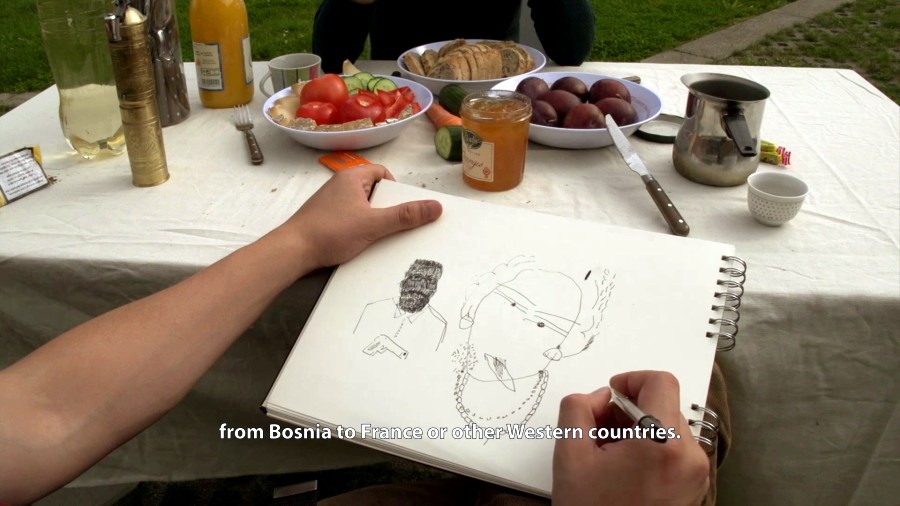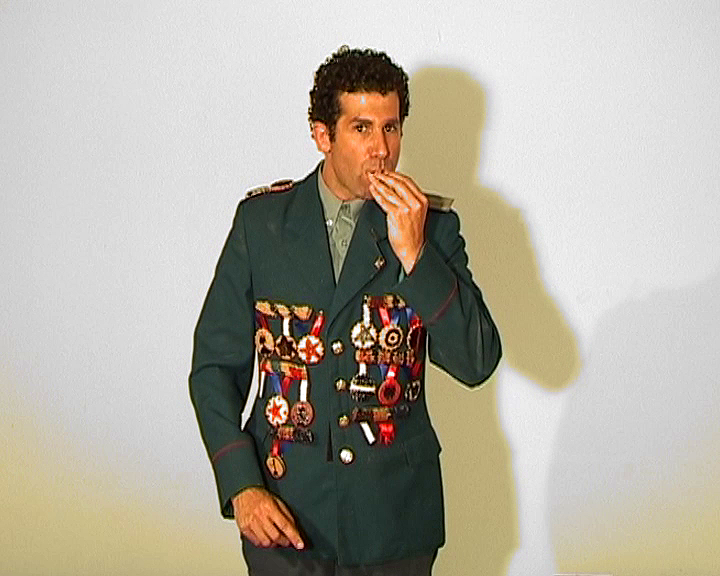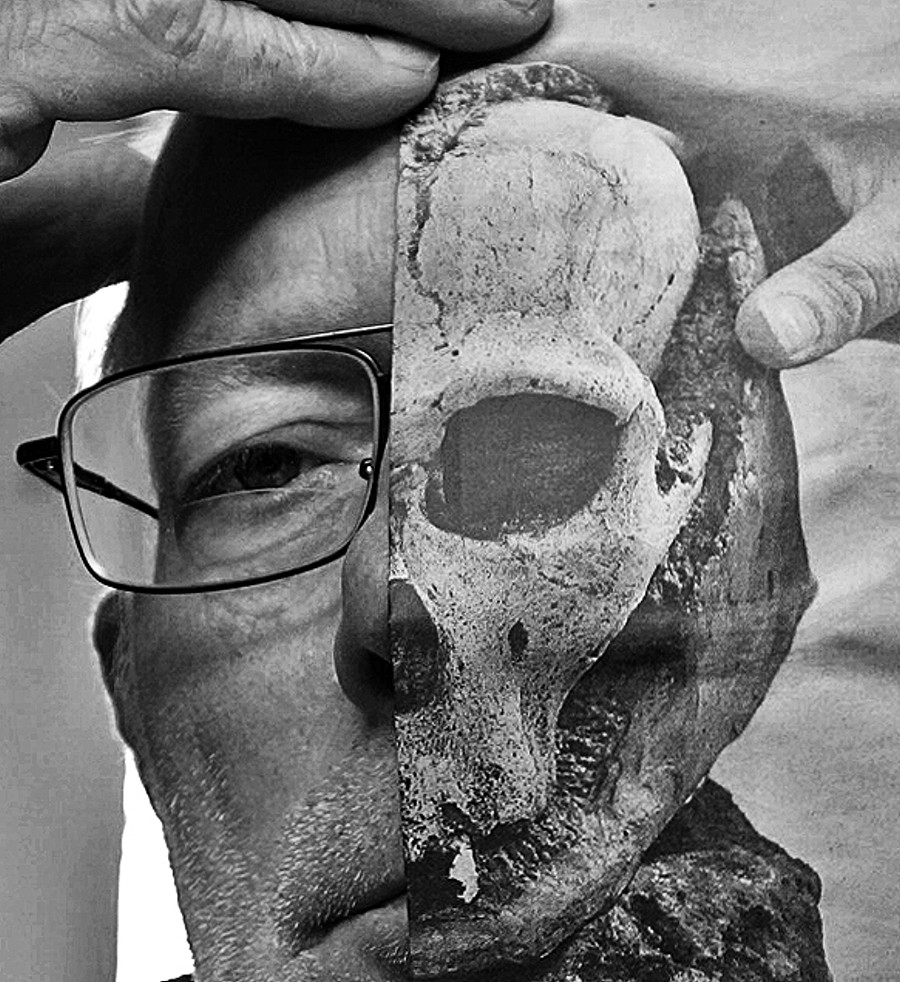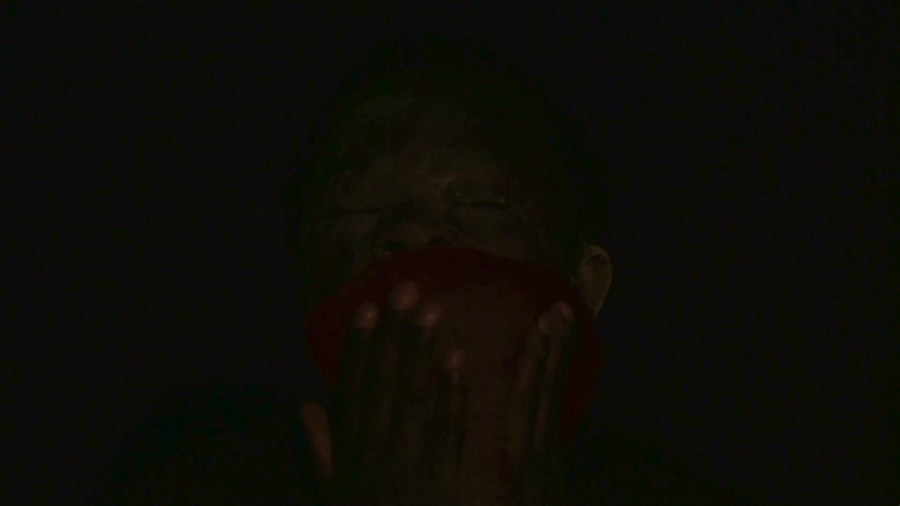Works 21-29
Yuko Katori (Japan) – Les oiseaux de Lémurie, 2014, 13:15
Luigi Console (Italy) – Resettlement, 2014, 4:53
Pierre-Luc Senécal (France) – Schrei, 2014, 9:40
Mark Richard Vernon (UK)- The Disappearing Sea, 2014, 10:00
Dario Lazzaretto (Italy) Loopers”, 2015, 06:12
Caroline de Lannoy (Belgium) – ‘Dark Crimson’, 2015, 04:54
Stasis73 (UK) – Threshold, 2015, 5:41
Theme Bannenberg & Nok Snel (NL) – SLOPES TO DWELL ON, 2015, 09:53
Adrian Zalewski (zheimeer) (Poland) – I will, 2015, 6:41

Yuko Katori (Japan) – Les oiseaux de Lémurie, 2014, 13:15
The birds of the lost continent is sending their poems to us in our dream. Lemuria is said to be one of the hypothetical ‘lost lands’ which sank in the sea, like Atlantis. It is often said that these ‘lost continents’ disappeared because there was a nuclear war, a natural disaster, a meteor fell etc. Or, it is also said that people in these civilisations did have a high level of technology, but the level of their spirituality did not match up with it, therefore, their own technology destroyed themselves, and so on.
Of course, there is no way to prove things like this, and all of these might be just ‘stories’ which someone created. However, we realise that these things can happen to us in this civilisation too. Even if we only look at the matter of ‘nuclear’, not only ‘nuclear war’ but also the situation of nuclear energy, we could think that the world as we know it can realistically disappear in similar ways as the lost continents. We have created nuclear energy and bombs that can destroy ourselves. Is there anything more traumatic than this?In this piece ‘Les oiseaux de Lémurie’ (The birds of Lemuria), the birds in our dream ask questions in the form of poetry. Such as; Where have you left your song? Why have you stop to dance? Why do you no longer pray? What is your highest value? What are you going to do with your energy? What are you going to do with the energy of the earth? Are you going to continue contaminating the sea? What is your real feeling towards the civilization that you live with? And what about beauty? What about philosophy???
Yoko Katori
She has been creating acousmatic pieces since 2014. Recent projects include a concert ‘Géophonies Acousmatiques’ at Atelier de l’étoile in Besançon (November 2014) with Jean Voguet and a creation of sound poetry with Sandrine Deumier for the exhibition in CRANE lab, Burgundy, France. (November 2014) She has also been selected to participate in Audioblast Festival by APO33, Nantes, France. (February 2015)
Before this, she was one of the creative teams in residence at OperaGenesis , Royal Opera House in London, UK from 2006 to 2009, where she developed two Theatre pieces. :The Lily of the Valley (libretto:R. Millner) / Sea of Souls: She was also commissioned for the Royal Ballet’s new works programme, held at the Linbury Studio Theatre, ROH (2009). Prior to this, there was a creation of an opera ‘The Nightingale and the Rose’ (2002/03), as well as other smaller pieces in collaboration with the writer Robert Millner. In 2013, she was accepted to participate in a residential workshop for opera composition held by Peter Eotvos in Budapest.

Luigi Console (Italy) – Resettlement, 2014, 4:53
Today we see many trips representing collective dramas. Who escape by war or economic crises, who cross the sea to reach a place called hope, Those who can not make it in the attempt. These are some of our daily collective drama Resettlement is a drama track about a trip. The principal theme of Resettlement is the conversion in harmony interview with Waltier Stier of director
Claude Lazmann. Walter Stier, a Nazi bureaucrat, is responsible for the transport trains during the deportation, without which none of the death trains would arrive at their destination stations like Treblika, Auschwitz or Belzec. Although he has always insisted that he did not know the “Final Solution”, but is one of the main responsible for this collective drama known as the Holocaust.
Using as a working basis the audio interview with Walter Stier and through the conversion of words in harmony, i want to recreate a sound ambient, in the virtual space, of harmony obtained. Through the sound in the virtual space, i want to emphasize the drama of the trip, the departure station, the long journey, the ambient in the train, the past, and the final arrival station. Pain and suffering are lost in space, wandering in the compartments dedicated to transport stuff now destined to pain, leading the listener to experience the trip, normally an occasion for pleasure, as a distressing painful feeling. An old collective trauma but always present. All of today there are several trips that represent the collective drama, changing only the means of transport and the era in which they
Luigi Console
Class 1986 from Ostuni – South Italy – with an education self-taught, Luigi Console studied at ILAS in Naples and in the Scuola Politecnica di Design in Milan like visual designer. In the years, he directs his research on the connection between visual communication techniques analog and digital in the video and audio fields. In 2012 he joined the study gloWArp, multimedia communication , with which furthered his research in new technologies applied to communication. His main activity is in the fields of new media art, audio and experimental video fields, and he is also currently teacher for workshops related to New Technologies for Arts. Love to experiment with different media and its connection, without losing the main Objectives and the needs of the project.

Pierre-Luc Senécal (France) – Schrei, 2014, 9:40
Concept
Schrei, “scream” in German, is my attempt to transfer into music the horrors of World War, a representation of the extent the Horror can take. Based on a number of historical documents as well as Jonathan Littell’s Kindly Ones, this piece places itself along the countless studies and novelists’ work which attempt to have us look closer at the reality that the executioners were alarmingly ordinary. It is meant as a dissent to the idea we might have of mankind, confronting us to its darker sides as well as the ocean of shades of grey that separates Good from Evil. In the end, it questions us on the true nature of humanity and our identity as human beings.
You will hear the voices of men and women, both victims and executioners, telling their tales as they bring you through the mass murders in the East, the propaganda campaign of the Third Reich and the gas chambers. Voices where suffering and brutal dehumanization blends with the reports of SS officers, giving in to nervous breakdowns and sadism. Voices from beyond the grave, urging us to listen and to remember, that pain is universal, a thread that connects us all as members of the human race, even when Evil is done.
The murders of this war, of any war for that matter, often committed with barbaric and senseless cruelty, remain the product of human beings. In that, we remain somewhat, human brothers.
Creation of the work and tools
Long before I started composing this piece, it had been decided voice would be a key element. Being a nearly impossible material to work without being instantly recognized, the voice would be preserved “as is”, without any treatment, and used both as a guideline to maintain the audience’s attention and as a melody, both musical and of timber.
This process was in great part respected for all the other sound materials. Using mostly the recordings of two imposing metal objets (a thunder sheet and a tam tam), those sounds were only treated with basic tools (transposition, reverb, editing, EQ) before being “written” with volume and pan curves, as if they were contrapuntal melodies in a Baroque piece.
While the piece’s structure can be heard as 4 large sections of a French Suite (Toccata, Allemande, Courante and Sarabande), this discourse also borrows from the orchestral’s, as the metallic sounds have been orchestrated like instruments supporting the choir of recorded voices. In the end, both materials somewhat sing in harmony, keeping a trace of what was to be a contrast between voice and metal, between flesh and bullets.
Constantly fueled by additional readings and overall research, this project is an ongoing one. Even though this project mostly deals with death, it also has to talk to the survivors of this war. In the end, life did go on, and hope has yet to be fully addressed in this current version of the piece, as of now only evoked in the final segment, where the evanescent voices of a choir are singing through the dying breaths of gassed victims.
Pierre-Luc Senécal
I am 12 when I tell my father I want to learn guitar. It’s the start of thousands of hours listening to Pink Floyd, Iron Maiden, Metallica, Sigur Rós, Godspeed You! Black Emperor, practicing technical death metal on guitar and whatnot.
At 19, my musical studies begin with electroacoustic music under the wing of Michel Tétreault and Pierre-Marc Beaudoin in Cégep de Saint-Laurent, Montréal
Today, I am 23 and I keep learning with great teachers and composers such as Georges Forget, Martin Bédard, Robert Normandeau and Nicolas Bernier in Université de Montréal.
To me, music is everywhere: in organized and disorganized sounds, in progressive death metal, electronica, post-rock and even in pornogrind.
I hope I’ll keep finding it in live performances, acousmatic music, music for theater, as well as in the other numerous projects I always lead.

Mark Richard Vernon (UK)- The Disappearing Sea, 2014, 10:00
This composed soundscape alludes to the events of the tragic 2004 Indian Ocean Tsunami that devastated the coast of many parts of Indonesia, Sri Lanka, India and Thailand killing over 230,000 people. Over 40,000 Sri Lankans died on that day. The small town of Hikkaduwa, the location of the majority of these recordings, was particularly badly hit. Many people drowned simply because they could not swim. If an early warning system had been in place it could have saved the lives of thousands.
Whilst the majority of the composition does not refer to the Tsunami explicitly (with the exception of the voice at the end) it is constructed in four phases or movements that could be interpreted as chaos, submersion, mourning and reflection.
Components of the piece include:
· A fishing boat captain trying to communicate by radio with other fishing boats in the Hikkaduwa area.
· Chanting over a PA and waves on the shore at the Seenigama temple – an island temple that miraculously was untouched by the Tsunami. Many locals believe it was spared because it is a sacred place.
· Processed sounds of crows and other birds.
· Distorted radio and PA announcements.
· Performance artist, Sita Pieraccini, singing a duet with a boat engine.
· The clatter of bobbins used in lace making recorded in Welligama, another coastal town that was badly affected.
· Kamani Di Silva describing the sound of the Tsunami and how villagers heard it differently as the sound of thunder or a bomb blast – Mrs Di Silva, herself a victim of the disaster, is the proprietress of the Telwatta Tsunami Photo Museum. The museum is housed within the ruins of her old family home. She managed to survive by running two kilometres inland. Nearby is the site where a train with over 1,000 passengers on board was swept away, the engine itself ending up 5 kilometres inland.
· Waves breaking on the shore in Hikkaduwa and the distant the hammering of boat repairs in the harbour – Almost the entire fishing fleet of the town was destroyed. In the wake of the Tsunami relief aid helped to rebuild the fleet, an essential cog in the local economy that also provides the livelihood of many of the town’s residents.
All sounds used in the creation of this piece were recorded during an artist’s residency based at Sura Medura in Hikkaduwa on the South West Coast of Sri Lanka in 2013. The residency was supported by UZ Arts and Creative Scotland.
Mark Vernon
is a sound artist and radio producer based in Glasgow. His radiophonic creations range from documentaries and radio plays to experimental audio collage and soundscape pieces. He has produced programmes and features internationally for radio stations including RADIA, Resonance FM, Wave Farm, CKUT, VPRO and the BBC and has also been directly involved in the creation of the UK art radio stations; Radiophrenia, Hairwaves, Radio Tuesday and Nowhere Island Radio.
Together with Monica Brown he runs Lights Out Listening Group, a monthly listening event focused on creative uses of sound and radio that takes place in complete darkness. He also records and performs in a number of collaborative and solo music projects with record releases on Staalplaat, Ultra Eczema, Entr’acte, Staubgold and Gagarin Records.

Dario Lazzaretto (Italy) Loopers”, 2015, 06:12
A sound art work inspired by the primary need for the conception of a work of art: it is mandatory to question myself about the meaning and necessity of my artistic expression. Most of the time I could say of my work that “everything makes sense, but it has no justification.” The tragedy of the Holocaust but also, more generally, every atrocity committed by humanity open wide doubts about the true nature of man. We were able to do everything and its opposite without learning from the horrors, as in a vicious circle. So I decided that this inner dispute had to be voiced in the form of dialogue, which would express the overlapping of antithetical tensions. So two imaginary interlocutors – in two different languages – chase themselves without ever reaching themselves in a round of sense-nonsense: What is the point – here, now, and especially for me – in doing an audio-work on a collective drama? While in the background, the sound of a broken violin, slowed and distorted, painful and insistent. The sound of the subtext of the history of man
Dario Lazzaretto (Padua, 1975)
work with a practice and a relational approach. He’s interested in the social, political and cultural aspects of contemporary life; his works often use the sound element as the main vehicle of meaning, while maintaining a visual component. He has participated in numerous international residency programs (Italy,Iceland, Cyprus, the Netherlands, United States). Among the venues that have proposed its work within museums and prestigious Italian and international private institutions, among which: Dortyart Museum (Dordrecht-NL); Macro (Rome), Museum Les Abbattoirs (Toulouse), Italian Institute of Culture (Barcelona), Palace of Arts (Naples); and many more.

Caroline de Lannoy (Belgium) – ‘Dark Crimson’, 2015, 04:54
The work ‘Dark Crimson’ involves structured sounds with an implicit concept of time, associated emotions, pitch, and energy. The presence of these elements is organized into units with interrelated rhythm, harmony, and melody. Variations of the same chord sequence are mixed, repeated, manipulated and superimposed. The loop circulates and re-circulates like the same adventure over and over again, but somehow different each time. By playing the same chord at different points, I emphasize different overtones and produce subtle variations of colour. The work takes a dramatic form, gradually working up to a climactic point.
Software used: Logic Studio Pro.
Caroline de Lannoy
was born in Brussels and lives and works in London. She studied at Athens School of Fine Arts, Central St Martins College of Art and the Slade School of Fine Art. She lectures at the Slade School of Fine Art, University College London.
She works across painting, drawing, sound, video and composition. She has exhibited internationally including: The Collection Lincoln Museum, La Verriere, Art In General, Huddersfield Art Gallery, MASS MoCA, Tate Britain, Royal Academy, Arnolfini, Sainsbury Centre for Visual Arts, Whitworth Art Gallery, MONA Museum, Kunst Museum Hollfeld, Mamco Museum, Mondriaanhuis, Sint-Lukas Galerij, Cheltenham Art Gallery & Museum, Kettle’s Yard, South London Gallery. She has completed major commissions across UK as well as a number overseas. She has been an artist in residence at Stiftung Insel Hombroich Museum, Cité Internationale des Arts and recently at The Josef & Anni Albers Foundation. Her work is in public and private collections in the UK and abroad.

Stasis73 (UK) – Threshold, 2015, 5:41
Throughout history into the present, for reasons of war, politics or disaster, all those removed from their homes, land, work, and culture reveal a common human experience of lost homeland and community ripped apart: the experience of not knowing where ‘home’ is.
It wasn’t easy, because you leave your home,
your possessions, your memories, your youth,
you leave your dead there………
and carry their memories.
Ali Oney removed from Rethymno Crete to Ayvalik Turkey
Population Exchange 1923
Sometimes the memories are too much: words turn into empty veneers, gestures and nightmares. Sometimes they turn into silent trauma because there are simply no words to describe the suffering, which Freud defines as an indelible imprint on the mind.
Continuing a practice that has explored through live sound-art performance, film and spoken word, issues of deracination and alienation, Tim Riley and Georgia Elizey have created Threshold as a direct emotional aural experience. Utilising atonal instruments and objects chosen for their disturbing qualities, original field recordings, spoken word, whisperings and group voice, Threshold evokes a distressing and painful internalized landscape of the forced mass movement of a people. Primary instruments are the waterphone, hammers, metal sheets and wooden blocks, together with field recordings have been mixed live through electronic effects and edited in Logic.
STASIS 73 – Tim Riley & Georgia Elizey
live & work on the South Coast of England. Working mostly collaboratively for the last 15 years & exhibiting nationally & internationally, their practise involves video, sound, text & spoken word, performance & installation; together with curatorial projects, & co-ownership of an experimental art space: STONEsquid.

Theme Bannenberg & Nok Snel (NL) – SLOPES TO DWELL ON, 2015, 09:53
SLOPES TO DWELL ON is a road movie with a series of photos of landscapes. We show you a peaceful piece of northeastern France, where 100 years ago the First World War was raging. The violin parts and various guitar solos drag your light hearted and dramatically along the four seasons. The audio is taken with a digital piano and a regular music program.
Dutch artist duo Theme Bannenberg (1953) and Nok Snel (1961)
are adventurers down to the bone. Where ever they roam the direct environment is the set for inspiration. The concept of T&NOK is opposite en spitting images. Confrontation is their drive. They produce sensible and nonsensical work. The result is photography, objects, words, installations, paintings and since 2008, also videos.

Adrian Zalewski (zheimeer) (Poland) – I will, 2015, 6:41
Collective trauma can have many faces. In my sound work I attempt to depict its casual dimension- mundane, everyday trauma that can appear at any moment of our lives, without śbig reasons, such as wars or natural disasters. This is existential trauma that is inherent and immanent part of our daily experience. As the basis for my work serves pop song by Whitney Huston, which deepens the sense of grotesque that is often associated with the notion of trauma. The work has been created by means of synthesizer and sampler. Samples used in the work are the sounds of my voice, electronically processed.
zheimeer is the solo project of Adrian Zalewski; he says: I’m not a musician, I’m just a sound maker, I don’t consider myself to be experimental artist, I am inspired by atonal music as well as disco, I don’t want to perceive music according to rules or stereotypes that are imposed on us by clever critics.” In his works zheimeer uses mainly the synthesizer, sampler and sequencer. As for the music, it could be described by
contradictions: whimsical, schizophrenic, stuttering vs. continuous, drone, ambient…zheimeer comes from Toruń in Poland. zheimeer took part in 2010 edition of Atomino, an international art festival in Crimmitschau, Germany as well as in many projects curated by Wilfried Agricola de Cologne.

